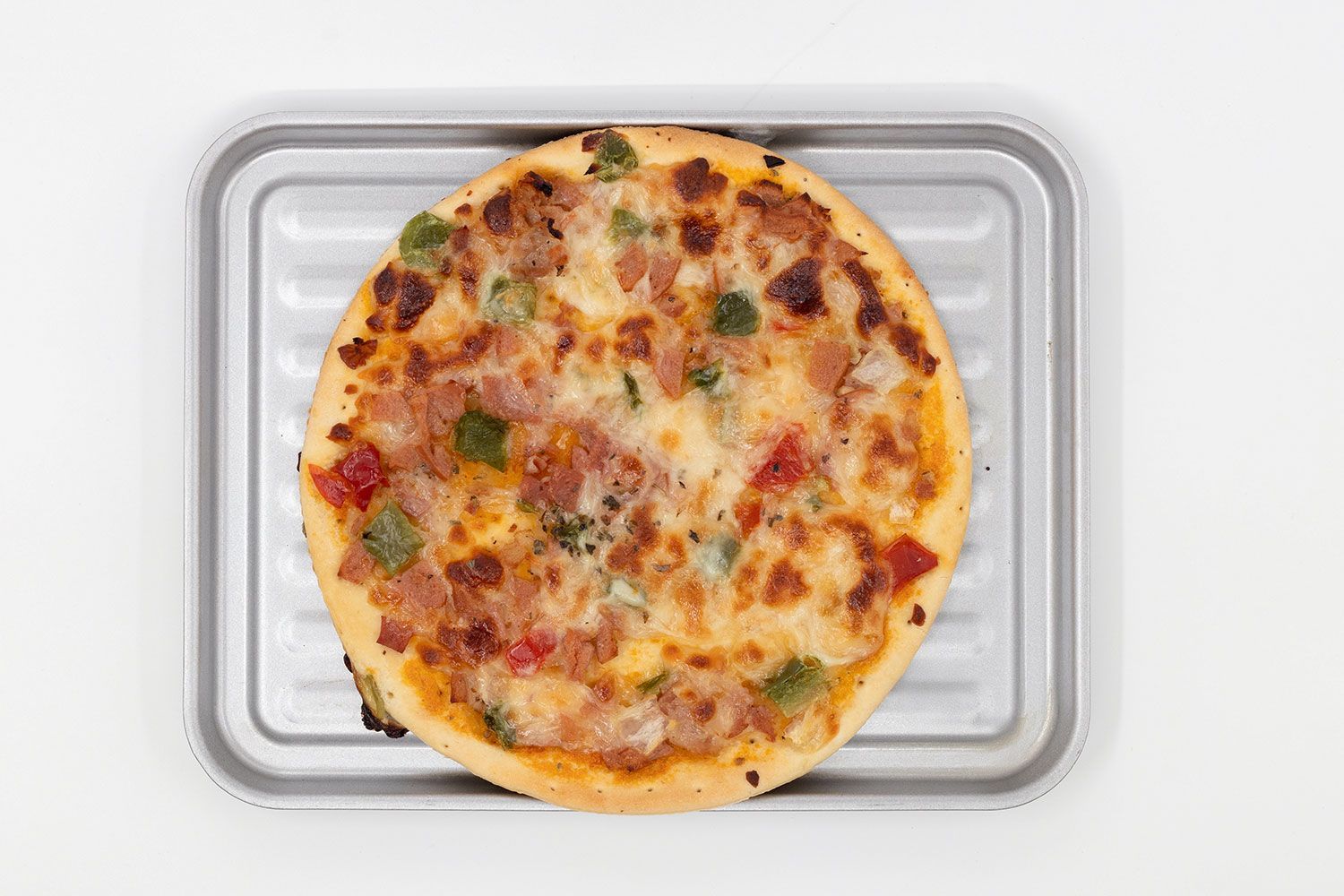Our recommendations are made independently. We may receive commissions from purchases made via our links.
Roasted Chicken Wings Test for Small Toaster Ovens
Check out how we test toaster ovens for roasting chicken wings. Choose a toaster oven to roast your golden brown crispy-skinned chicken wings.
This test is part of How Shouldit Tests Small Toaster Ovens v1.0
Chicken wings are a fan-favorite finger food to go with a cold drink. Thus, a good toaster oven should be capable of roasting them to golden brown perfection with crispy skin. That’s why we allocate the result for roasting chicken wings 25% of our performance score for a small toaster oven.
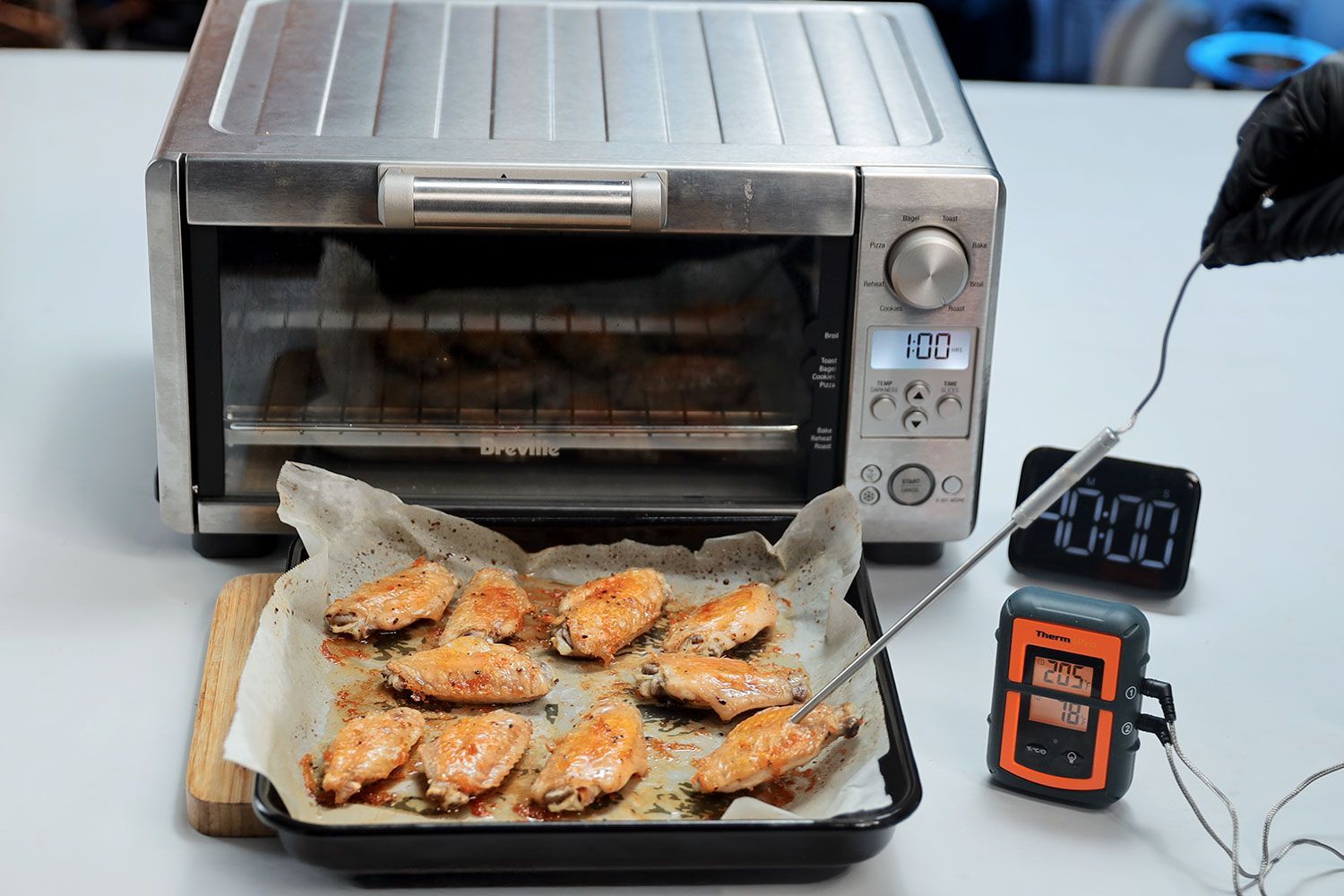
We also compare how our units fare against each other when roasting chicken wings. With this test, we hope to help you choose a toaster oven that can bring you the perfect savory snack.
For all of our performance tests, we had to keep the quantity and cooking temperature uniform to figure out and evaluate the cooking time. We found that small toaster ovens were better suited to cooking 1-2 portions at a time and not more than that.
Throughout our tests, even at the same power rating, most small-sized models didn’t perform as well as medium-sized models in cooking similar quantities of food. This was especially true for our Whole Roasted Chicken test even though most of the ovens were able to comfortably fit our recipe of a 3 lb chicken.
However, if you want to replicate the dishes but with better results, you can reduce the serving of fries to 6 oz and roast the chicken not as a whole but in pieces. Unfortunately, 4 pieces of toast or a 9-inch pizza are already the bare minimum.
Although many believe a convection system isn’t compulsory, our test results showed a higher performance score in convection toaster ovens. Some factors that don’t necessarily dictate this score are the number as well as the type of heating element. The number of cooking functions also doesn’t matter as much as how precise and stable the oven’s internal temperature is when cooking.
The power rating for toaster ovens of all sizes ranges from 800 W to 2200 W. A higher power output and more heating elements can attribute to an increase in the cooking performance of a toaster oven.
Our picks for the best convection toaster ovens should have a good stainless steel exterior to provide sufficient heat insulation as well as water and stain resistance. . Additional accessories like a rotisserie kit, an air fryer basket, a pizza stone, multiple racks, and extra baking pans can get an oven some bonus points.
Prior to the Actual Test
It was necessary to ensure that the steps and results of our tests would be consistent and could be replicated reliably. So, the first thing we did was come up with a set of standards for our test of roasting chicken wings in a small toaster oven.
We decided on 10 middle-joint wings for the most consistent surface area. Most small toaster ovens use 9x9 inch baking pans which can fit more than 10 wings. We had to find out the hard way not to use a whole bird like bigger toaster ovens.
Most baking pans of small toaster ovens are not non-stick, so we placed the wings skin-side-up on parchment paper with some cooking spray. Following the article on Healthy Recipes 101, we roast the wings at 400°F and flip them every 20 minutes until they’re done.
For the cooking time, we roast the wings to a golden brown color, record the time, and evaluate. If the oven could deploy convection mode, which is rare in small toaster ovens but would be beneficial for roasting meat in general, we would choose the most powerful level available.
If the finished chicken can be improved by adjusting the time and temperature, we do so to find the best settings. This is done after the taste test and directly affects the score.
We use four scoring factors including Cooking Time, Skin, Doneness, and Taste, and explain them in the ‘How We Score’ below.
Testing Equipment
Smartphone timer: Timing is one of the crucial factors when cooking with any recipe and using any cooking appliance, not just a toaster oven. Therefore, we measure the cooking time required to reach the desired results using a smartphone timer. We also check if it matches the preset timer if available.
Oven and meat thermometers: Temperature is another key aspect in cooking, especially with toaster ovens. So, we use a thermometer to keep track of the oven’s internal temperature.
We also check if it matches the preset temperature if available. For the meat thermometer, we use it to check the internal temperature of the chicken to make sure it’s fully cooked.
Camera: We recorded all the testing procedures on camera.
Steps
- We place a thermometer inside the toaster oven and preheat the oven for 15 minutes or until it reaches 400°F. We also use a phone timer when not provided by the oven.
- After prepping the wings as mentioned above, we place them inside the oven.
- After roasting’s done, we first check the internal temperature with a meat thermometer.
- We check the color of the skin from top to bottom and take photos.
- We pull the wings apart to check the crispiness of the skin and ascertain if there are any pink spots in the meat.
- We have a taste test with a group of four people including our head chef and finalize the score.
- If the outcome can be improved with a different time and temperature, we repeat the process to find the best settings.
How We Score
Earlier, we mentioned that the roasted chicken wings test takes up 25% of the performance score. Scoring factors are the Cooking Time (20%), Skin (20%), Doneness (20%), and Taste (40%). Each factor and the overall score of the roasted chicken wings test range from 0 to 10.
Cooking Time
The cooking time of our test wings is observed by our head chef Tuyet Pham to make sure their skin and doneness are the best each toaster oven could produce. This is to make sure that we don’t let the cooking time last indefinitely and/or sacrifice the scores for the two said components.
Most recipes recommend 40 minutes of roasting for middle-joint wings which our head chef approved, so we chose that as our benchmark for 9 points. Looking at the results, we felt that it could be faster, so we decided 30 minutes would be a 10/10. Then, every ten minutes increased is one point decreased.
- 10/10: 30 minutes
- 9/10: 40 minutes
- 8/10: 50 minutes
- 7/10: 1 hour
- ...
- 2/10: 1 hour 50 minutes
- 1/10: 2 hours
- 0/10: > 2 hours
Skin
For the skin, we first check for the color from the bottom to the top. We then pull the wings apart to check the crispiness of the skin.
- 10/10: 100% even golden color with a few brown areas; Very crispy
- 9/10: 90-80% even golden color; Nicely crispy
- 8/10: 70-60% even golden color; Nicely crispy
- 7/10: 50-40% even light color; A bit soft
- 6/10: 30-20% even light color; A bit soft
- 5/10: 10% even light color; A bit soft
- 4/10: Almost no color; Too many burnt spots; Very soft
- 0/10: Undercooked; No color; Burnt
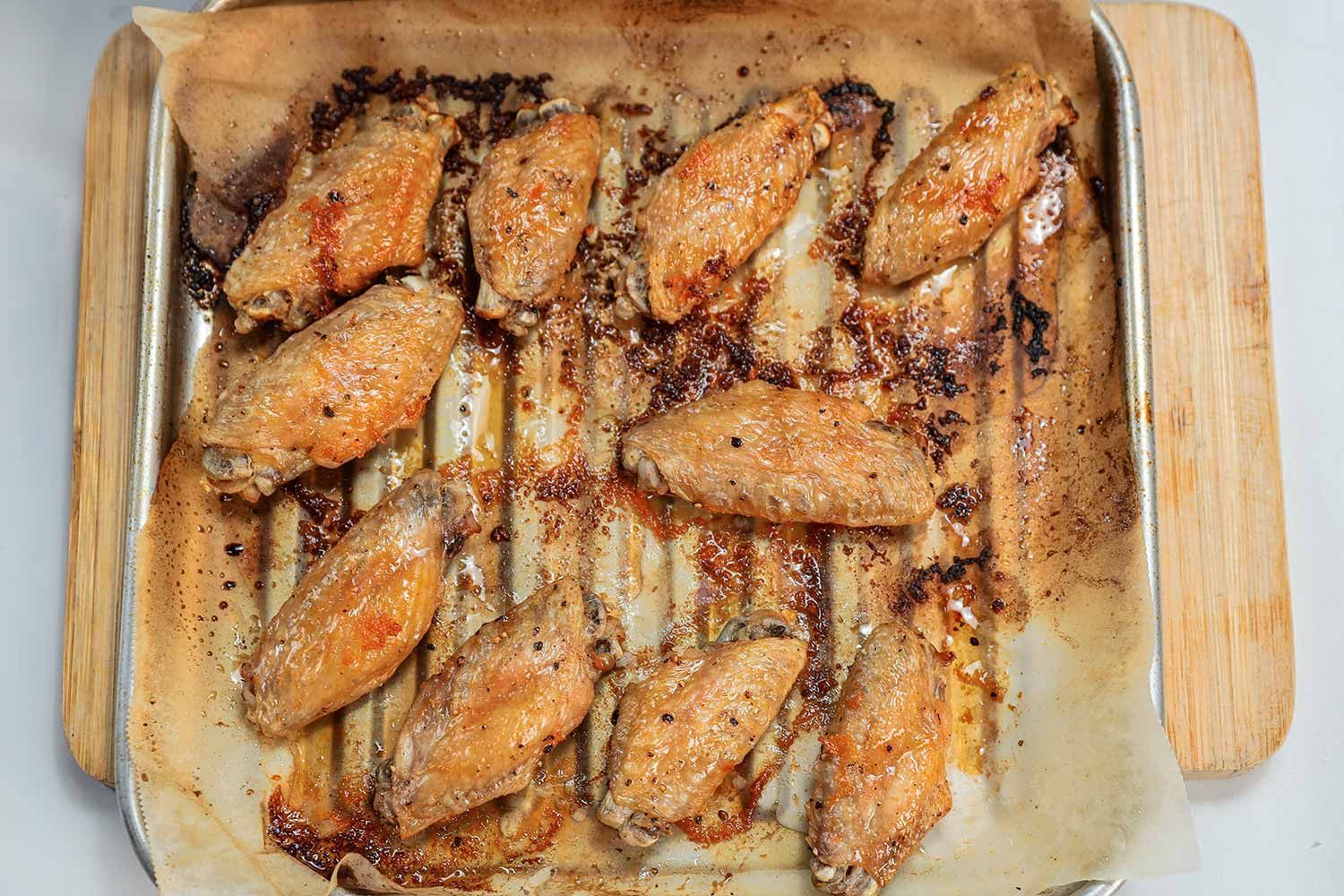
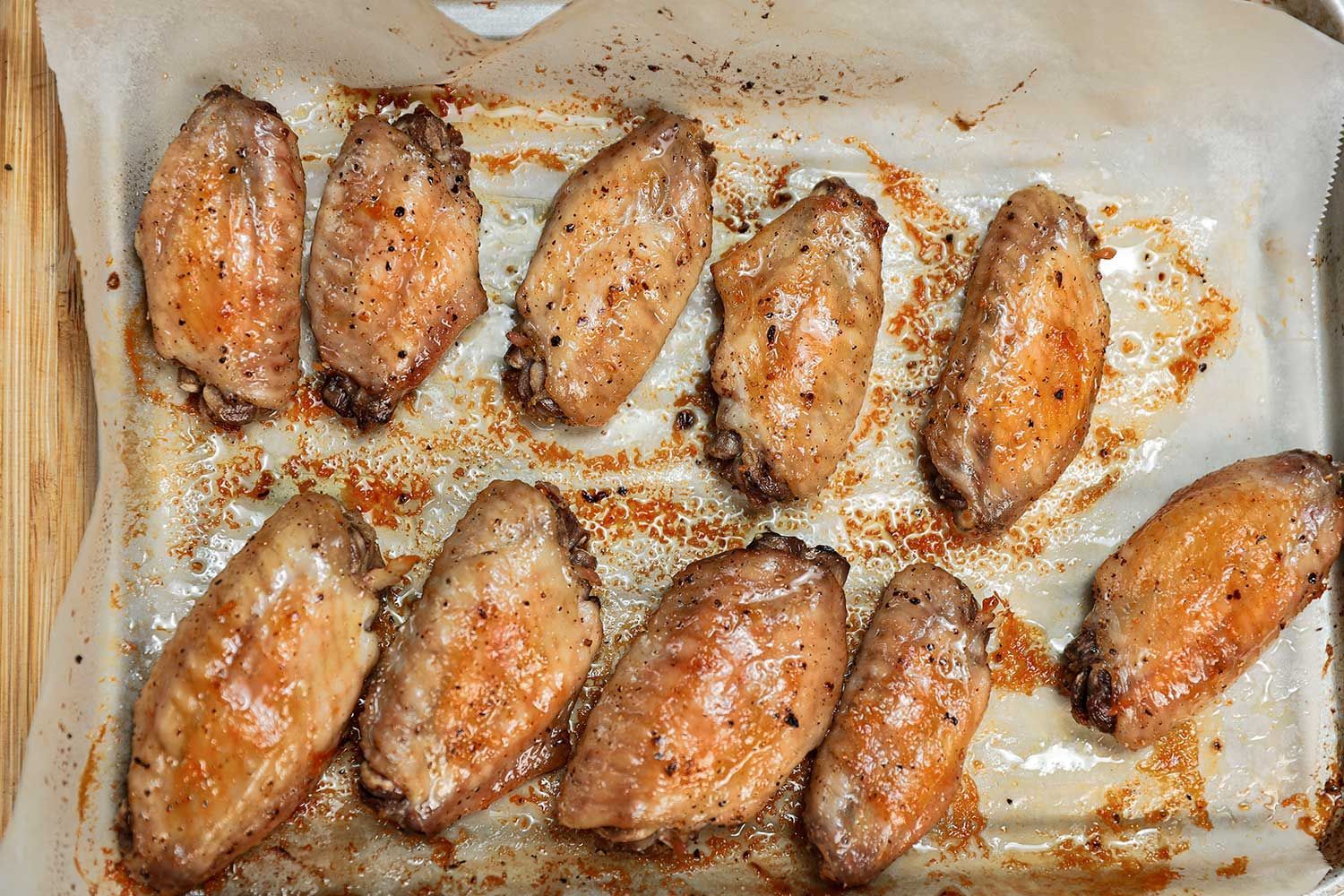
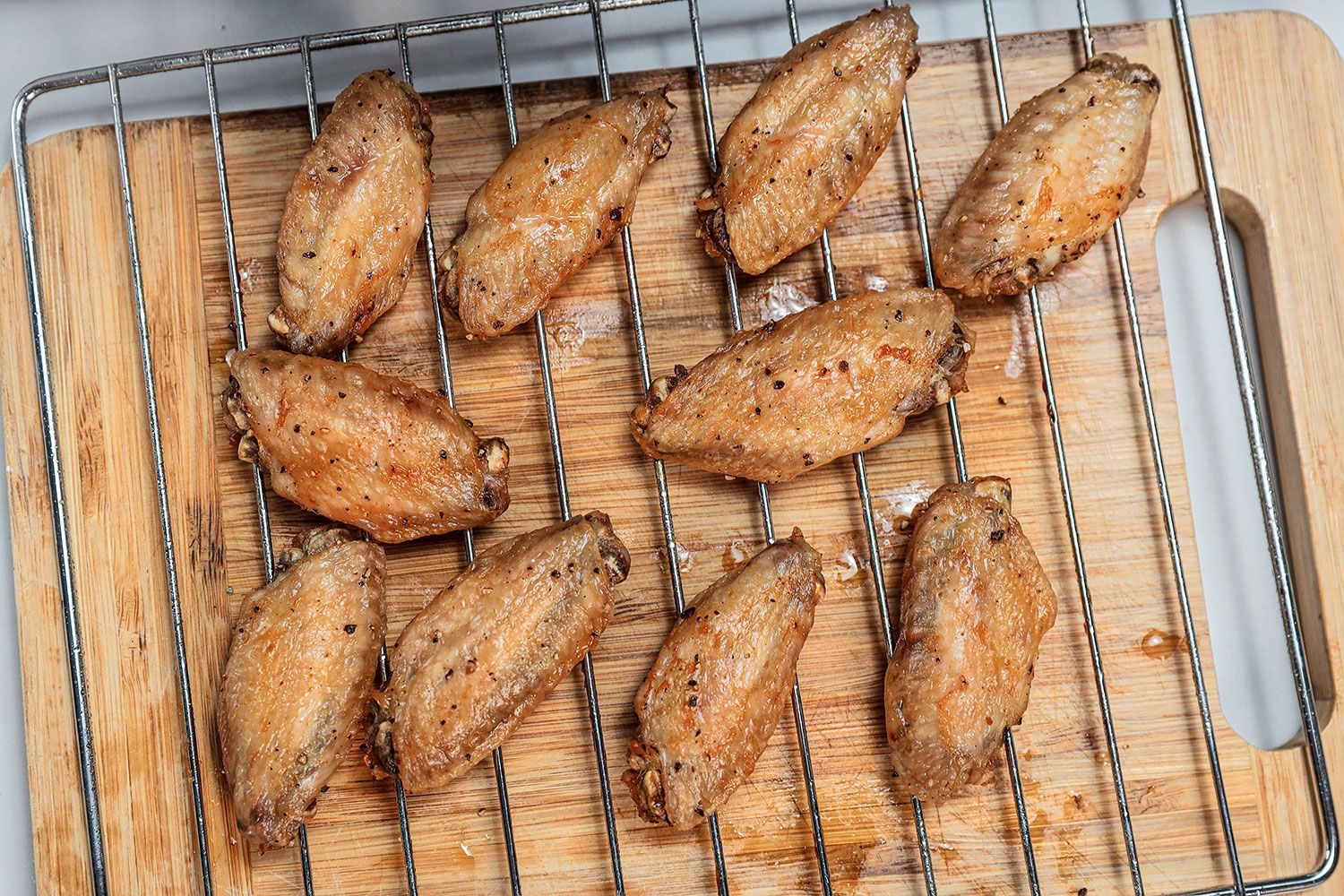
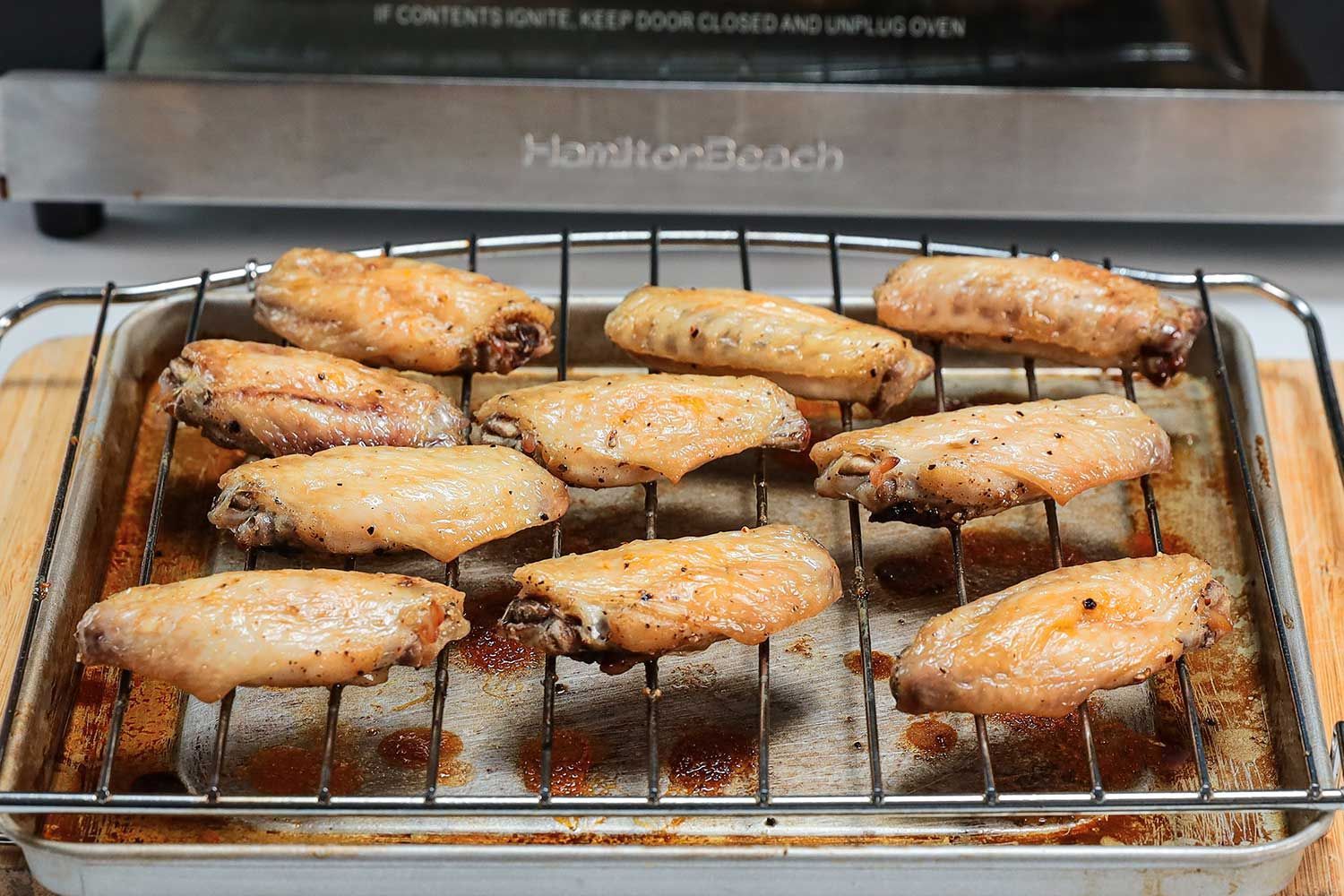
Doneness
For the doneness, we first check with a meat thermometer before pulling the wings apart. We do this by inserting it into the center of the meaty part without touching the bone. USDA recommends the safe internal temperature for poultry to be 165-180°F.
After pulling them apart, we check for any pink spots to make sure it’s thoroughly cooked. If the chicken is deemed undercooked by our chef, not only will it fail the doneness but also the taste component since it won’t be safe to eat.
- 10/10: 165°F ≤ internal temperature ≤ 180°F; No pink spots
- 9/10: 155°F ≥ internal temperature ≥ 190°F; No pink spots
- 8/10: 155°F ≥ internal temperature ≥ 190°F; Very few pink spots near the bones
- 7/10: 145°F ≥ internal temperature ≥ 200°F; Very few pink spots near the bones
- 6/10: 145°F ≥ internal temperature ≥ 200°F; A few pink spots near the bones
- 0/10: Undercooked; No color on the skin; Burnt meat
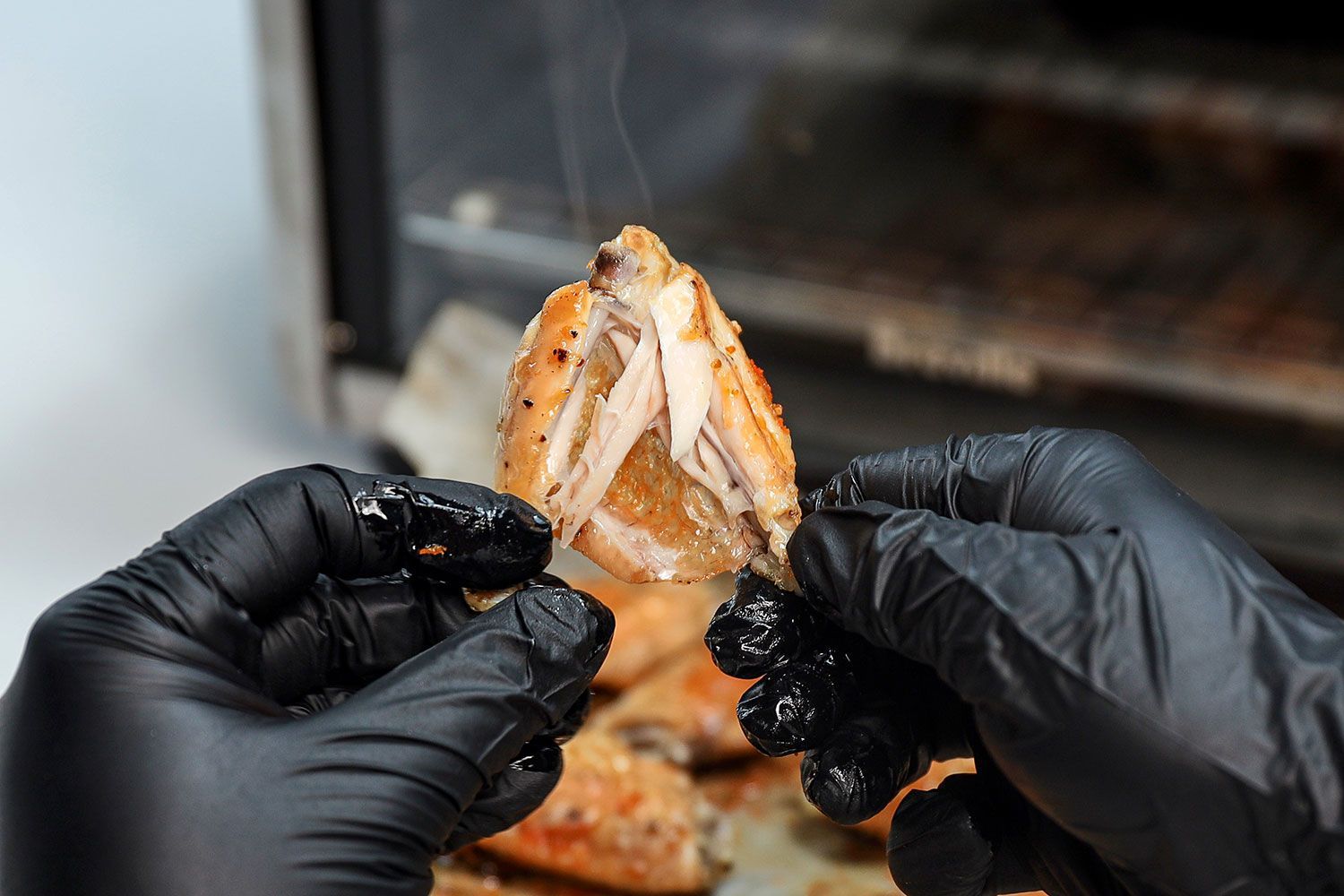
Taste
Deliciousness is a mostly subjective but essential criterion to evaluate any food, not just chicken wings. For a diverse range of opinions, our team of judges includes one professional chef, one home cook, and two foodies. Tuyet Pham, our head chef with years of experience and many professional awards under her belt, decides our scoring table.
Nonetheless, there are still a number of aspects we can use to explain our evaluation.
- A cooking time longer than necessary can result in burnt and dry wings. Meanwhile, a shorter time can result in uneven color and a lack of crispiness for the skin.
- A higher cooking temperature than necessary can result in burnt skin but undercooked wings. Meanwhile, a lower temperature can result in a lack of color and crispiness for the skin.
- If the skin is too burnt, it will most likely have an unappetizing bitter taste.
